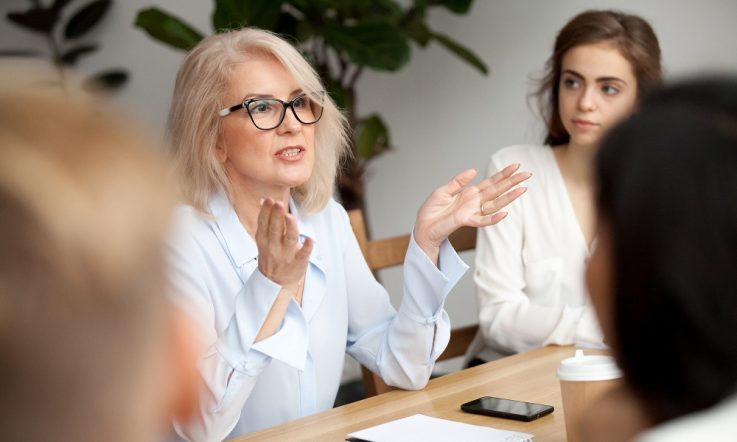In our latest reader submission, Dr Lars Andersson – Principal of Richmond High School in Melbourne – shares how his school has worked to establish effective Professional Learning Communities (PLCs). In this first article, he explains the thinking behind introducing the PLCs, and the planning and training phase.
Richmond High School (RHS) opened as a co-education public school in Victoria in 2018 with a cohort of year 7 students, and his since expanded to years 7-12 with a full workforce of teachers and educational support staff.
While it had been clear to the leadership team for a while that staff collaboration was a real strength in developing coursework and assessment practices, that collaboration did not always focus directly on student learning. As a school, we spent a lot of time thinking about what to teach, and how to teach, yet we had not spent enough time together analysing evidence of learning. Student feedback suggested that not all students believed that their teachers knew whether or not they had understood the learning in class, while staff feedback indicated a lack of confidence in our data literacy skills.
Diagnosing our school’s developmental need
Any new improvement initiative undertaken by a school needs to be guided not only by the best available evidence of what works, but also by a clear understanding of what this particular school needs. Vic Zbar makes this point in his paper We need to talk about change: No prescription without diagnosis, arguing that an improvement agenda must always be grounded in a ‘diagnosis of your school’s key developmental need.’ (Zbar, 2016).
For us at RHS, we knew that the school had a clear and viable curriculum, a positive and thriving climate of learning, and high-functioning processes around student support and wellbeing; however, professional collaboration consisted primarily of shared planning.
Our instructional model included an ‘evaluate’ element, yet the data and evidence from such assessments remained with the teacher, with no real structure or format for analysing it or discussing it with colleagues. Curriculum meetings in faculty teams consisted primarily of planning resources and assessment. Missing in many of our collaborative meetings was a clear focus on student learning.
Preparing for Professional Learning Communities
In 2021, we introduced a 3-pronged approach to addressing this issue:
- an action plan on building the capacity of all teachers to collect evidence of learning in class, led by our Learning Specialist
- another action plan on strengthening our collective ability to analyse such evidence, led by one of our Leading Teachers
- participation of the leadership team in the state education department’s Professional Learning Community (PLC) Initiative training.
As part of the latter professional learning, we ran a PLC trial internally with volunteers from our year 8 English teacher team. Prior to the trial, we surveyed the teachers involved to see what their expectations and mindsets were before experiencing the PLC format. We also filmed each of their PLC meetings and analysed that footage as a leadership team, in order to understand how effective the collaboration was and what obstacles might emerge for a group of teachers new to the PLC format.
A post-PLC survey with the trial volunteers demonstrated a very high level of ‘buy-in’, with teachers very keen to continue with PLCs. After further discussions with the whole teaching staff at RHS, we formed an action group of leaders and teachers (volunteers) to develop the key documentation, resources and processes for the introduction of PLCs in 2022.
A few key design guidelines emerged both from our training in the PLC Initiative and from our consultation with teachers:
- PLCs would be organised in subject teams
- they would use an inquiry cycle based in shared evidence of learning from class
- they would have autonomy in identifying their ‘crumb’, or focus, for their cycle, as long as it emerged from learning data from class
- they would meet once each fortnight and those meetings would be protected from disruption
As part of the department of education training, we had been introduced to ‘tight’ and ‘loose’ PLC practices, and these practices informed our development of PLCs at RHS. This included the use of protocols and norms that were co-created by PLC members at the start of each year – such protocols and norms allowed us to create forms of collaboration that respected all the voices in the PLC, while also prompting us to challenge each other to question assumptions and broad inferences from the data.
Before formally launching PLCs, we ran a whole-school professional learning session with Colin Sloper, co-author of the book Collaborative Teams that Work: The Definitive Guide to Cycles of Learning in a PLC (Sloper & Grift, 2021). In this session, we learnt how to make collaboration effective by following through with norms around respectfully challenging each other in relation to evidence of learning from class. This prompted some great reflection and learning in our teams, and helped create the foundation for successful collaboration in our PLCs.
We recognised that each PLC would need at least one ‘knowledgeable other’ (Sharratt, 2018) who could guide the conversation towards high-impact teaching strategies when required. This meant that we needed a professional learning plan that addressed the learning needs of both PLC participants (all teachers) and PLC facilitators.
We also realised that we would need a series of feedback loops between the PLCs and both the leadership team and the PLC action group. This included anonymous feedback through a Google Form survey from teachers to the leadership team, the use of individual (but shared) Google Docs for documenting the learning of each PLC in each meeting, and principal members participating in PLC meetings as equals with teachers.
These feedback loops allowed us to be responsive to the needs of the PLC members and tailor professional learning to the requirements of teaching staff. Timperley, Ell, Le Fevre and Twyford have stressed the need for ongoing training for teachers in relation to data literacy, arguing that ‘supporting professional learning that builds familiarity with evidence and how to use it to make decisions is a major contribution that leaders can make to improving outcomes for the learners in their schools,’ (Timperley et al., 2020).
Once the initial planning and training had been completed, we were in a great position to begin our PLC journey with the official launch of PLCs at RHS in 2022. From then on, we would hold fortnightly 50-minute PLC meetings every second Thursday, run by PLC facilitators who would be taking part in ongoing training over the course of the year.
From the start, we could tell that PLC meetings were noticeably different from other meetings; teachers leaned into the meeting – even literally – and were engaged and animated, as they discussed student learning with colleagues. Gradually, over time, the quality of the conversations shifted to become more evidence-informed, more challenging, and more rigorous. This was professional learning through shared, collaborative inquiry into student learning.
Stay tuned: In a follow-up article, Dr Lars Andersson will be discussing his school’s experience of implementing PLCs, and the impact on practice and student outcomes.
References
Sharratt, L. (2018). Clarity: What Matters Most in Learning, Teaching, and Leading. Sage Publications.
Sloper, C. & Grift, G. (2021). Collaborative Teams that Work: The Definitive Guide to Cycles of Learning in a PLC. Solution Tree Press.
Timperly, H., Ell, F., Le Fevre, D., & Twyford, K. (2020). Leading Professional Learning: Practical Strategies for Impact in Schools. Australian Council Educational Research.
Zbar, V. (2016). We need to talk about change: No prescription without diagnosis, CSE Occasional Paper. Centre for Strategic Education.
Before officially launching Professional Learning Communities at Richmond High School, preparation included a trial with a team of teachers.
What are the benefits of trialling an initiative before going ahead with a full rollout? When trialling programs in your own school, what data and feedback do you collect, and when? How does this inform your future planning?



